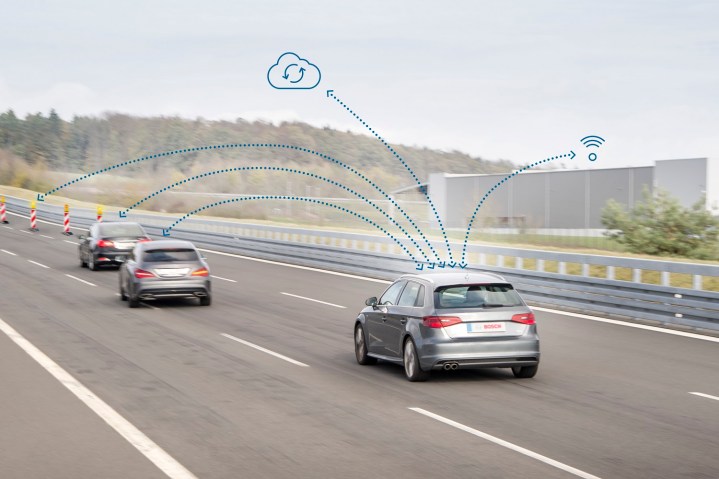
German supplier Bosch has entered the race to connect the world. The company aims to become a leading provider of mobility services, and it created a division named Smart Mobility Solutions in 2018 to fast-track its projects.
More CES 2019 coverage
- Our CES 2019 Hub: The latest news, hands-on reviews, and more
- Baby, you can’t drive my cube: All the insane self-driving lounges at CES 2019
- Bell shows a flying taxi prototype at CES 2019
- Bring Google Assistant into your car with the Roav Bolt
Championing connectivity and autonomy is easier said than done, even for a company that has over a century’s worth of experience under its belt. Digital Trends sat down with Bernd Heinrichs, the executive vice president and chief digital officer of Smart Mobility Solutions, during CES 2019 to learn more about the company’s vision for a connected future.
Digital Trends: 5G is the talk of the show at CES. Does it open up new possibilities for IoT(internet of Things)?
Bernd Heinrichs: In my view, I0T consists of four pieces. You have the things that are connected, the data they generate, the processes that analyze it, and the humans who digest it. Everything is connected. 5G is one possible – and I intentionally say one – means of connecting these four pieces. I would not only restrict this to 5G. I think there will be more advanced wireless solutions popping up in the near future alongside
Are you working on V2X?
It is a big, big business of the future. There will not be an autonomous world without having a working V2X solution, on the base of 5G or whatever. Our new business unit is focusing on everything that is not in the car but outside the car. Vehicle-to-vehicle, vehicle-to-anything. That is our clear focus.
We’ve been hearing about V2X for at least a decade, yet it’s still not common. Why is that?
It’s still not here yet. I’ve discussed this with several of the OEMs (original equipment manufacturers). I say it’s a cake. The OEMs and the tier-one supplier are pieces of it, and these pieces are cut and not together. There is a middle of the cake, and nobody is touching that at the moment. If we don’t touch it together, we will never achieve an autonomous or shared world. That is not just a symbol. We are all the pieces, and we need to agree on how this middle connection is working. We haven’t done that yet.
Even basic IoT needs a good internet connection to work. How will you keep rural areas connected?
I believe we won’t have full 5G coverage in the next 10 years. We need to find alternatives. I think in rural areas, we need to ask which services are really needed. Do we need a data-hungry service? I don’t believe so. We can offer IoT-based infrastructure services and penetrate entire regions without making a big investment. That only helps for specific services, like controlling the interaction between lights and cars, but it will be limited. As long as we don’t have 100-percent 4G or
How does artificial intelligence (A.I.) tie into IoT?
A.I. plays a super-big role. My view is that it’s extremely essential if it’s supporting the real-time characteristic of service, and it’s all about real-time in mobility. We have the capabilities of building A.I. real-time solutions. You will see a lot in this area.
I’m a big fan of A.I. We should be hiring more A.I. and data scientists, not software engineers. I think that, in the future, software will develop itself.



